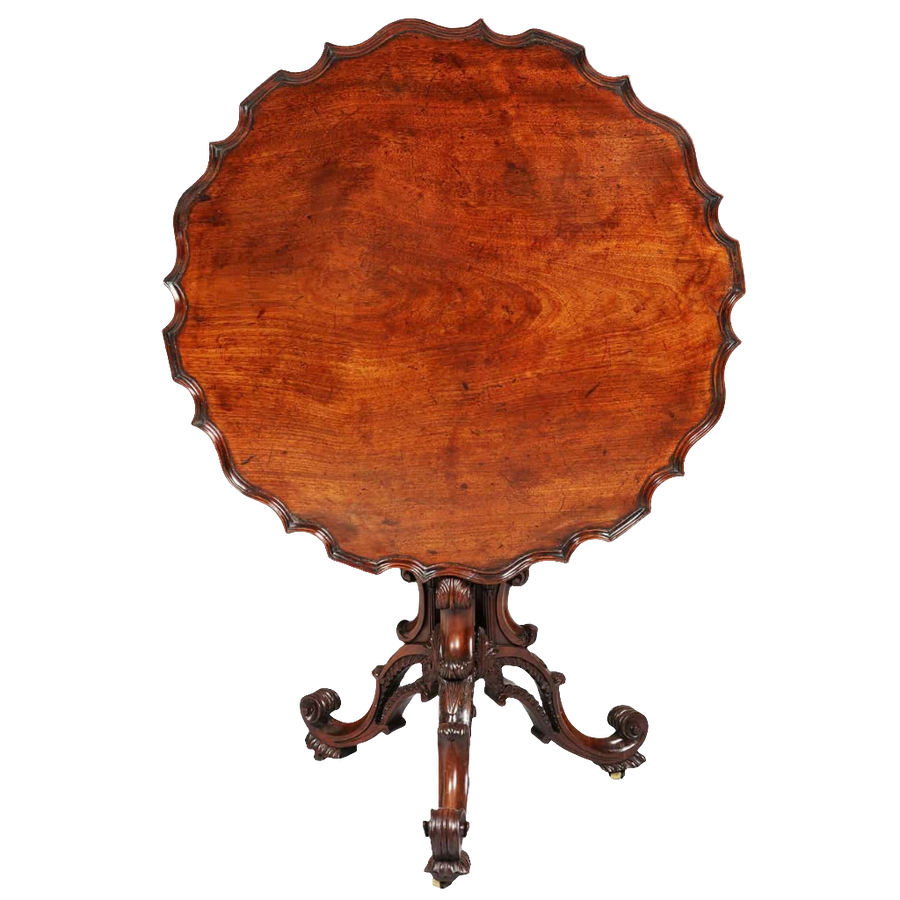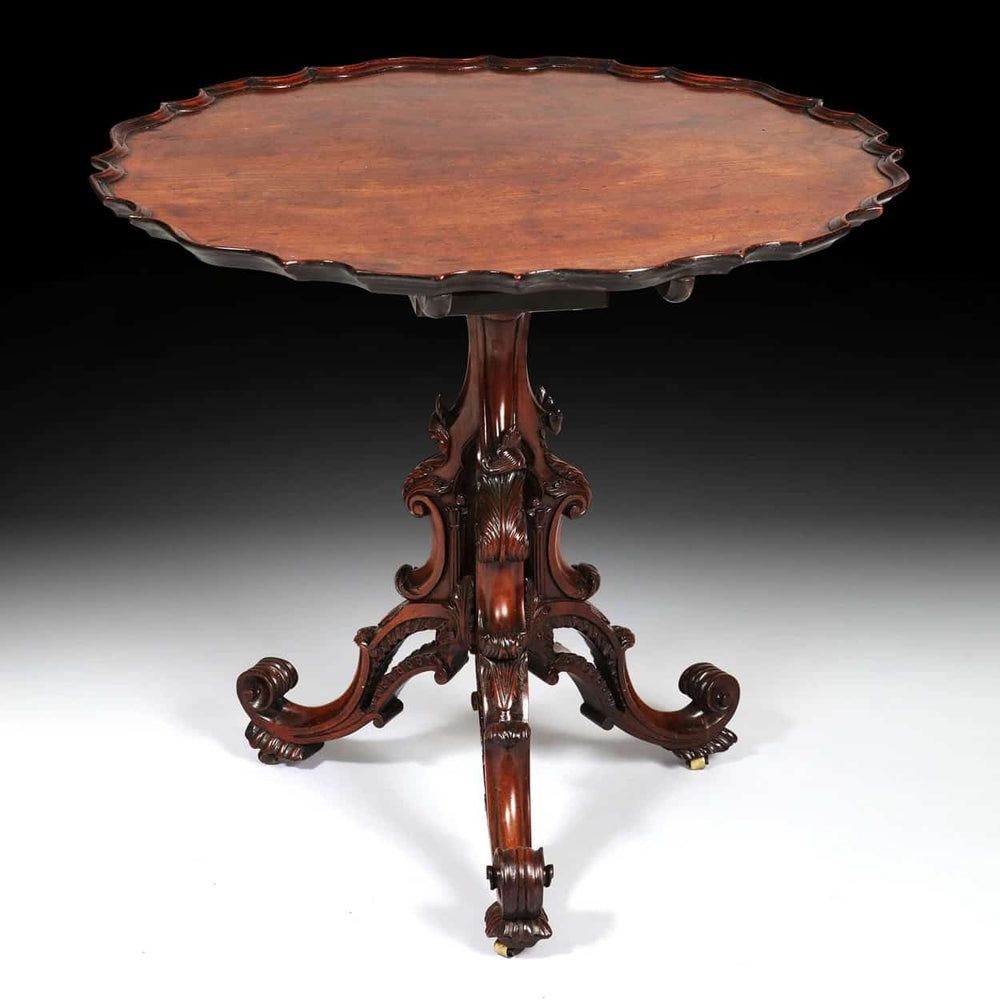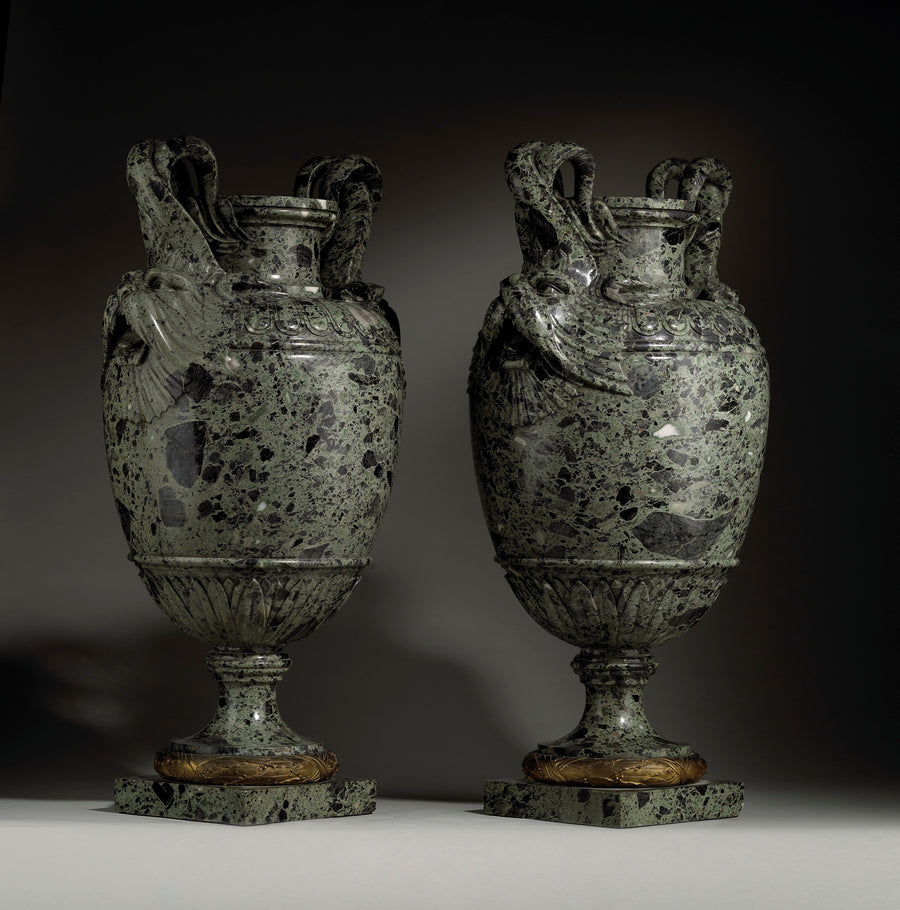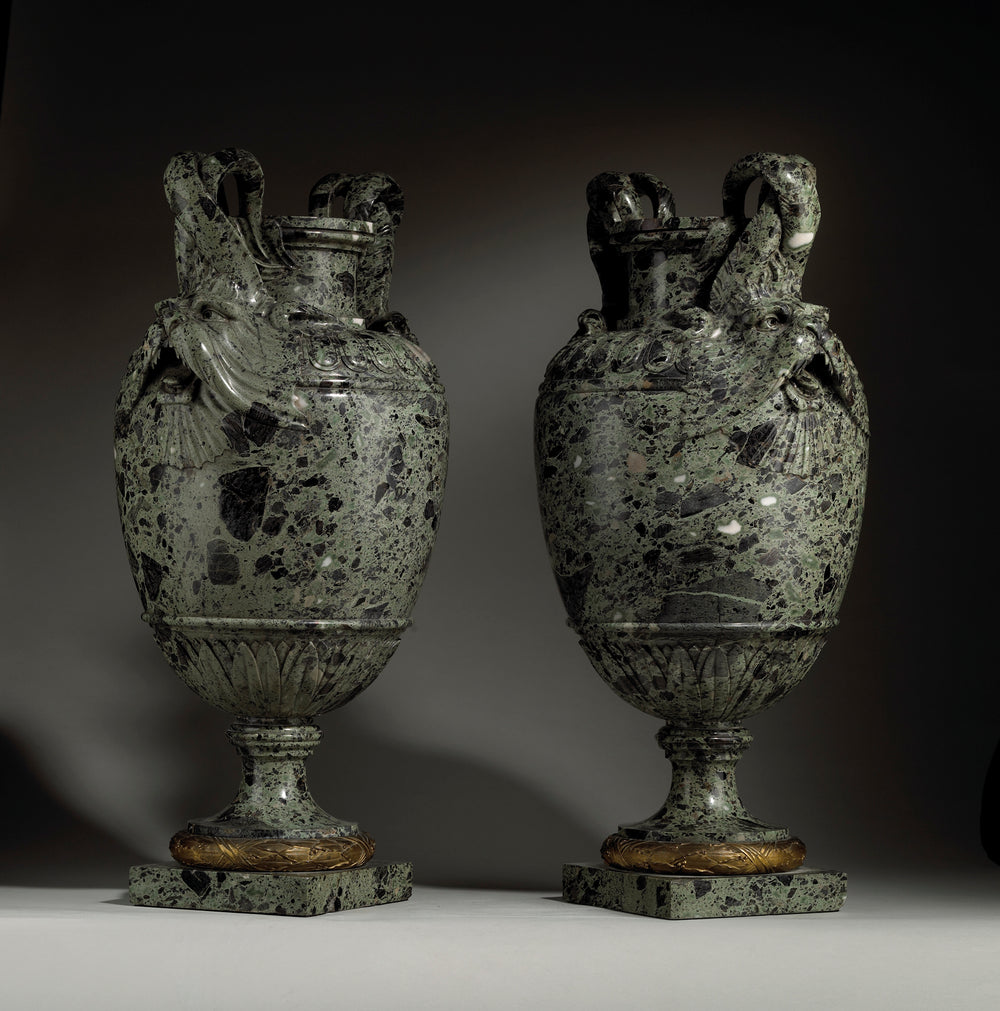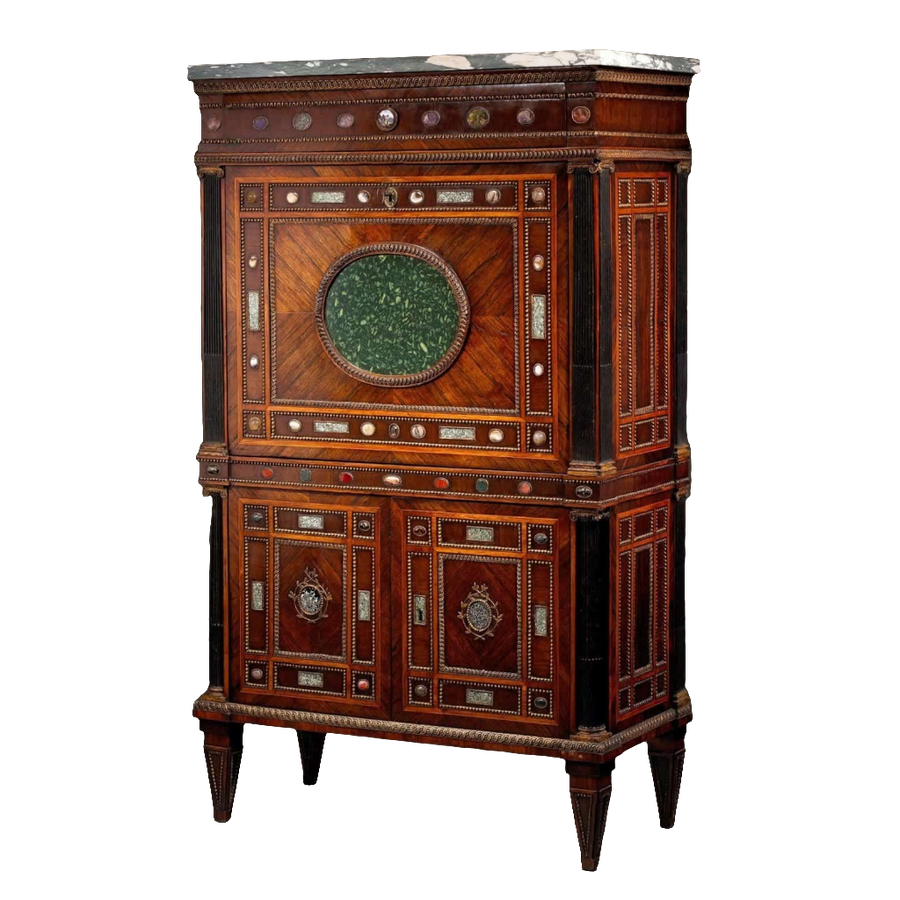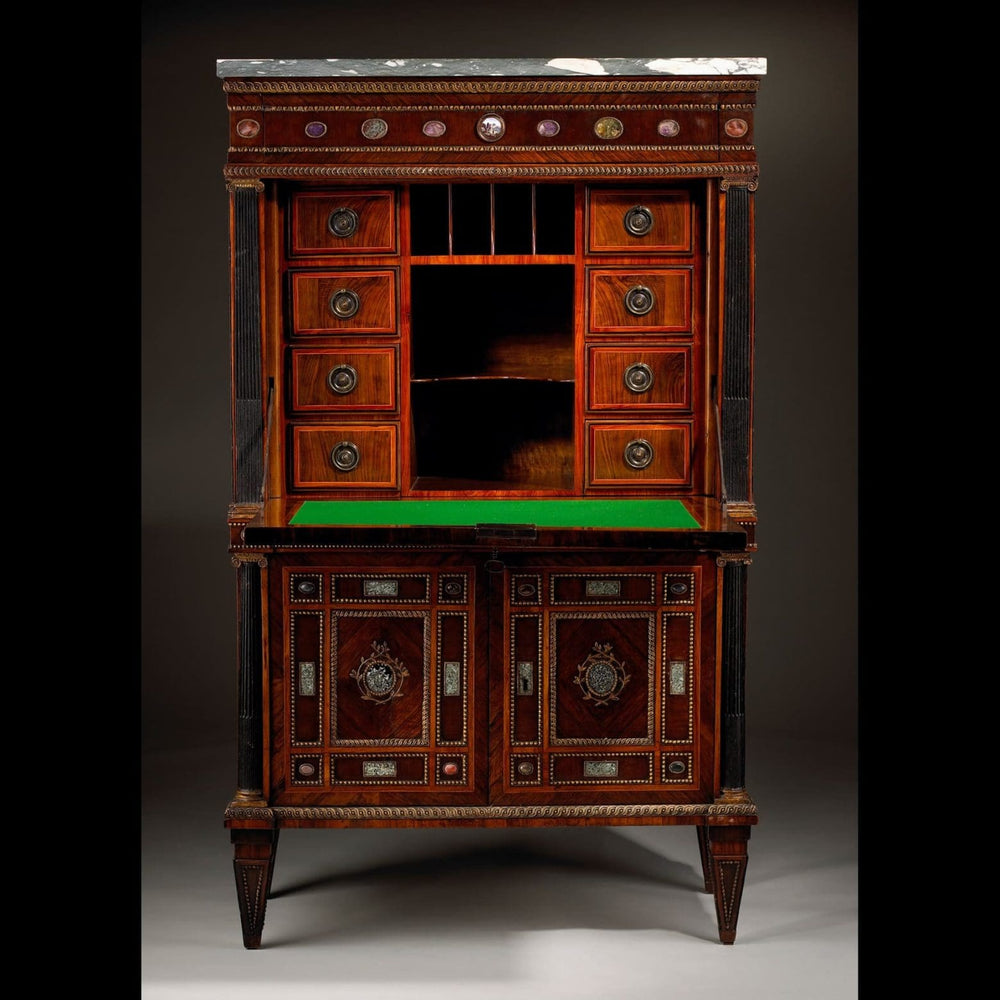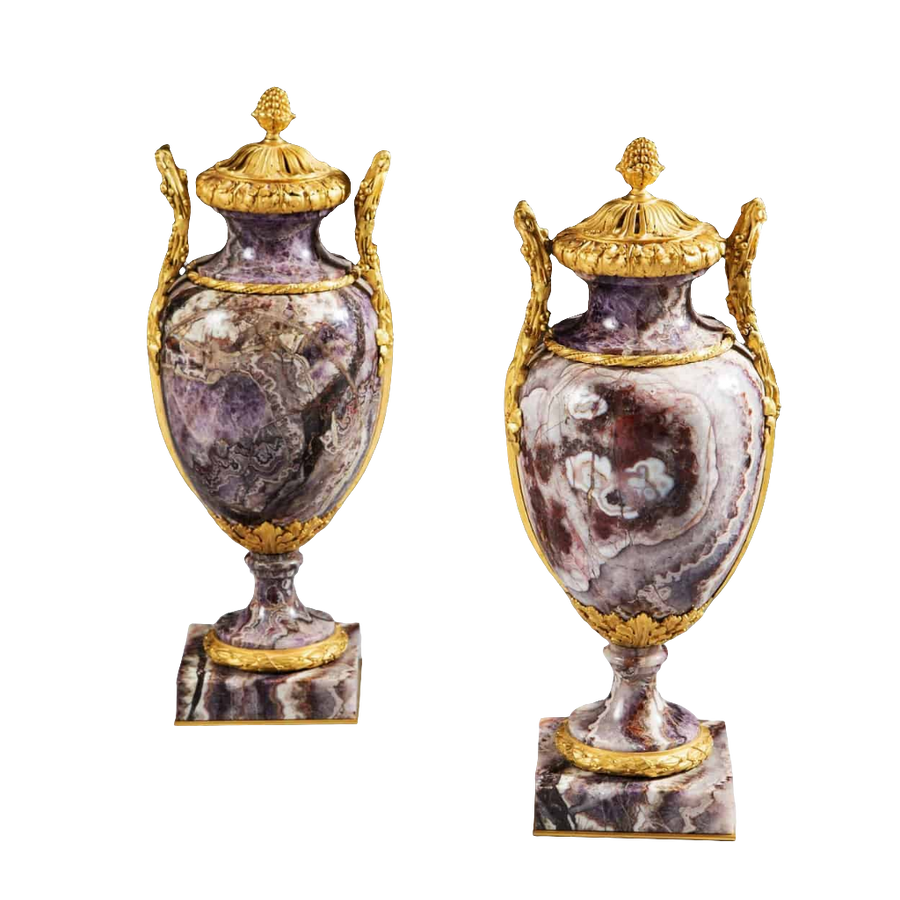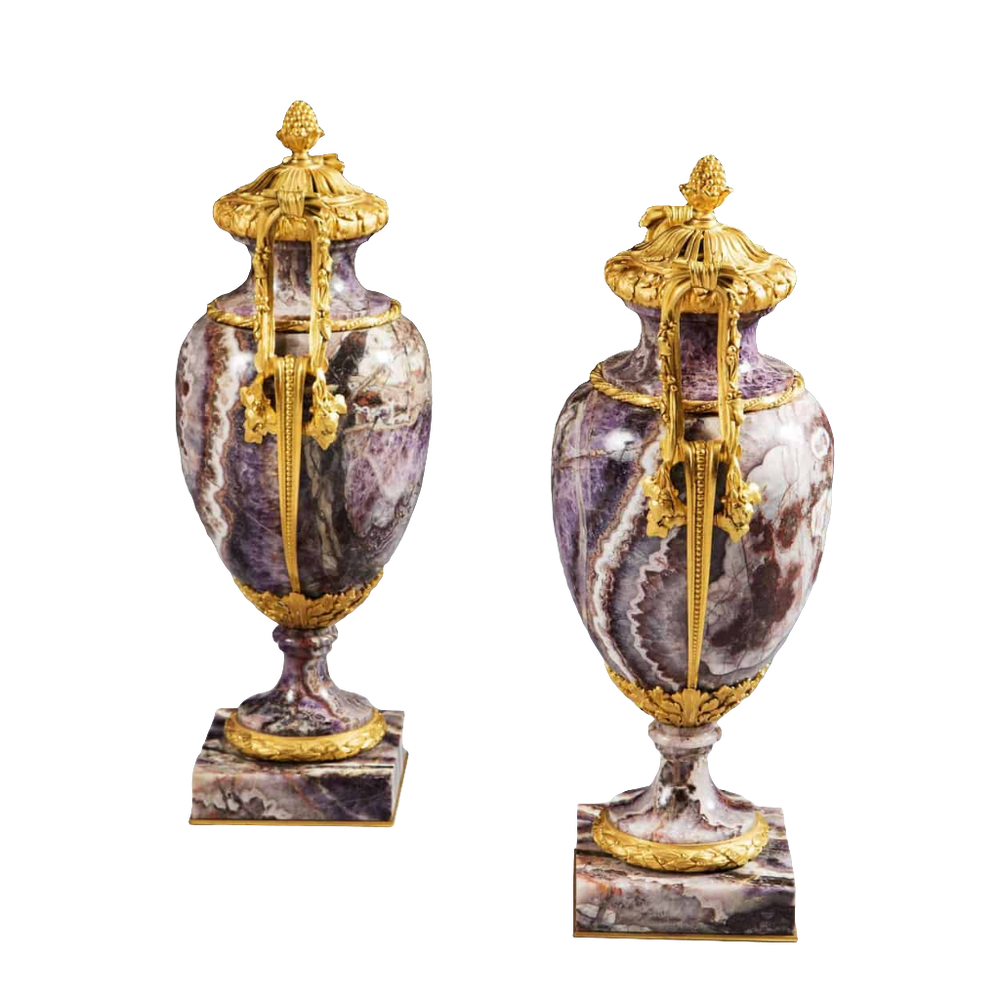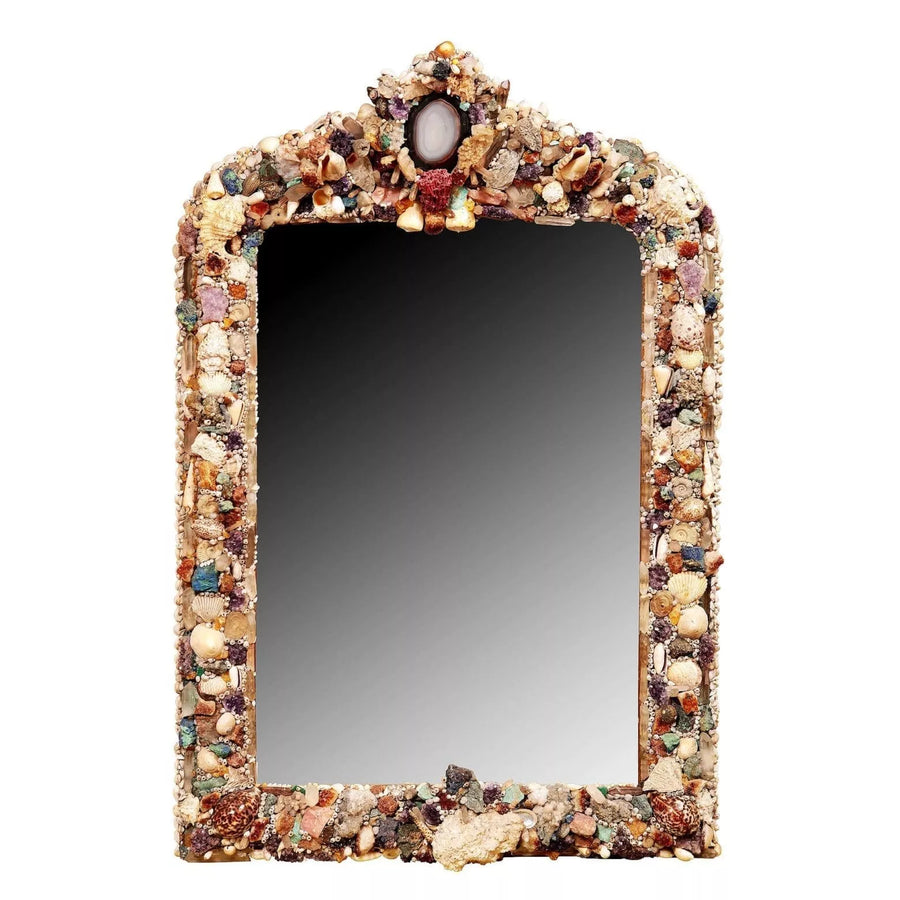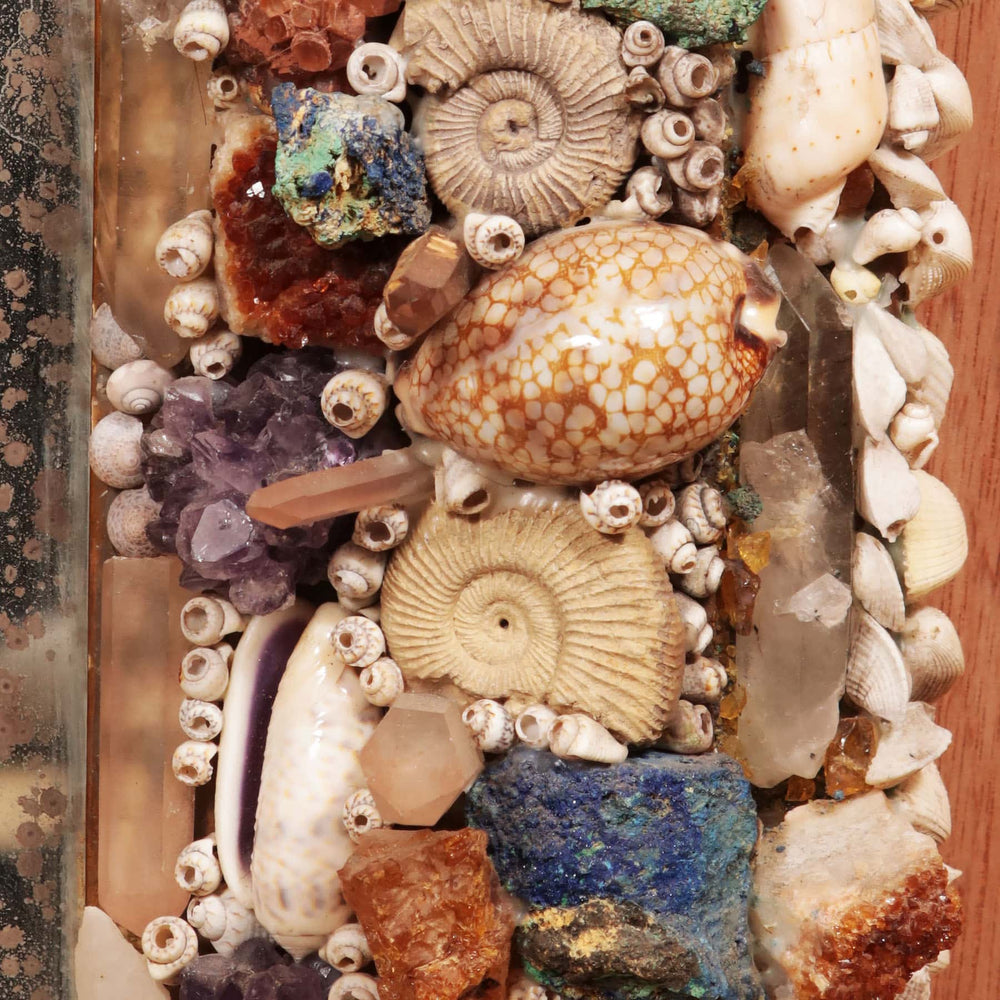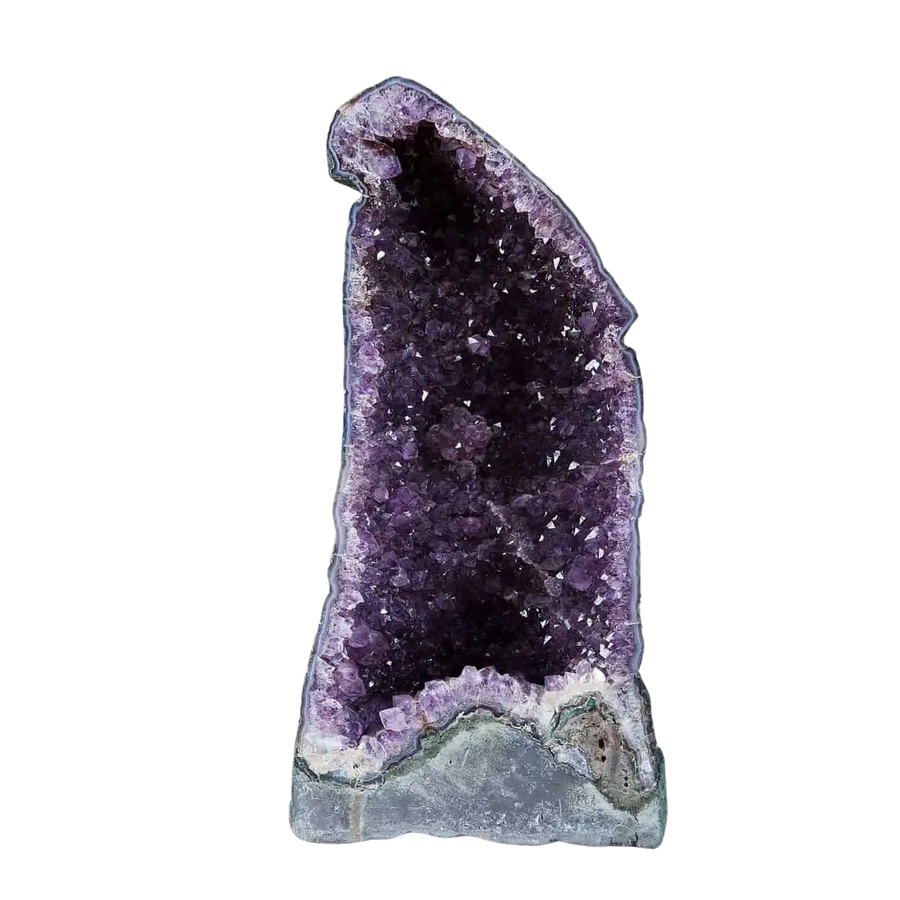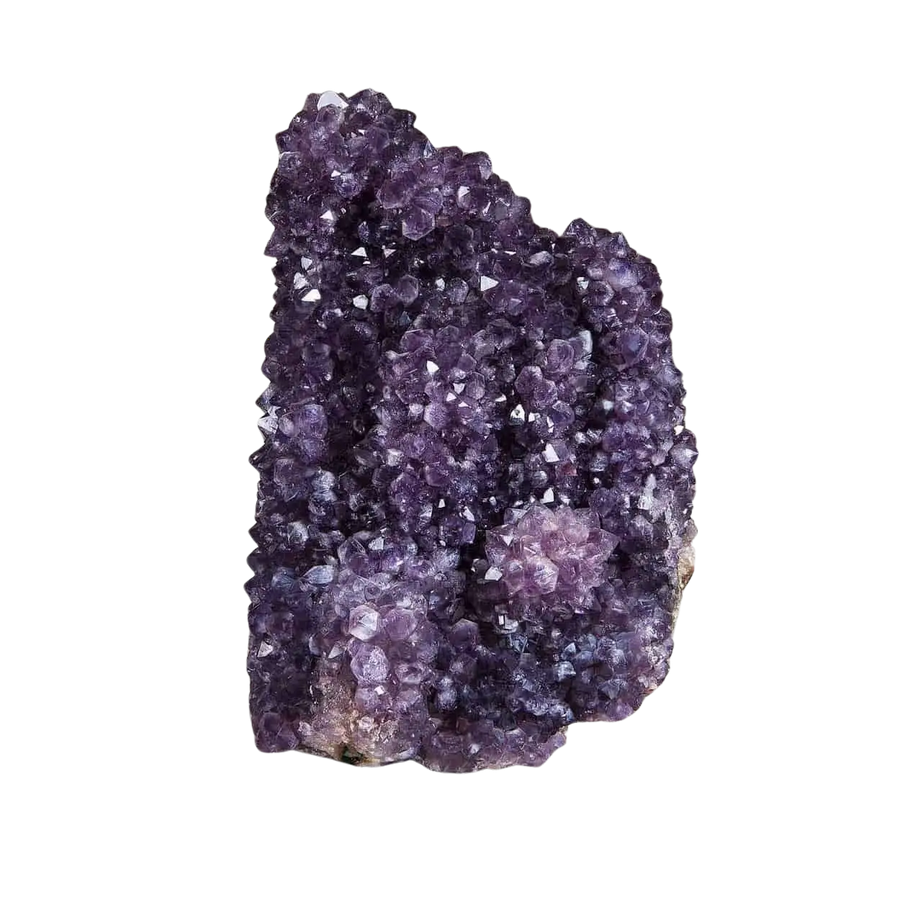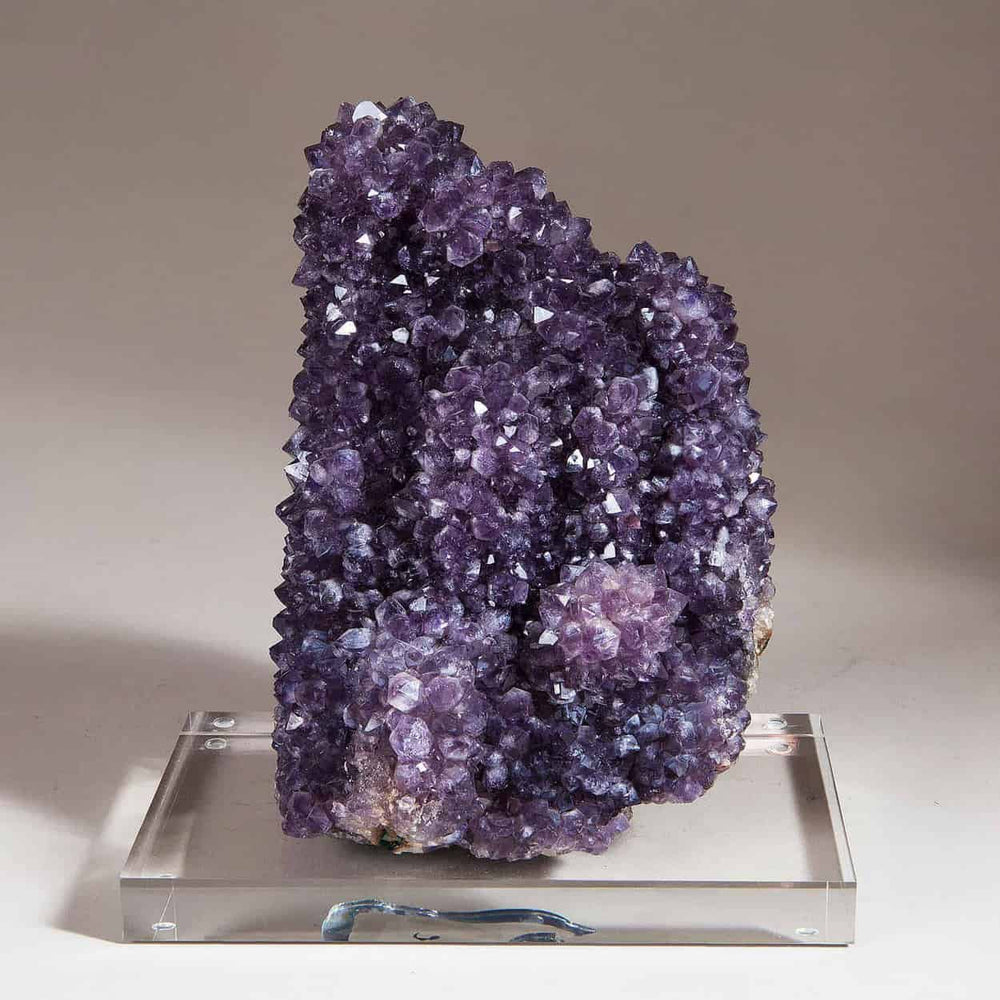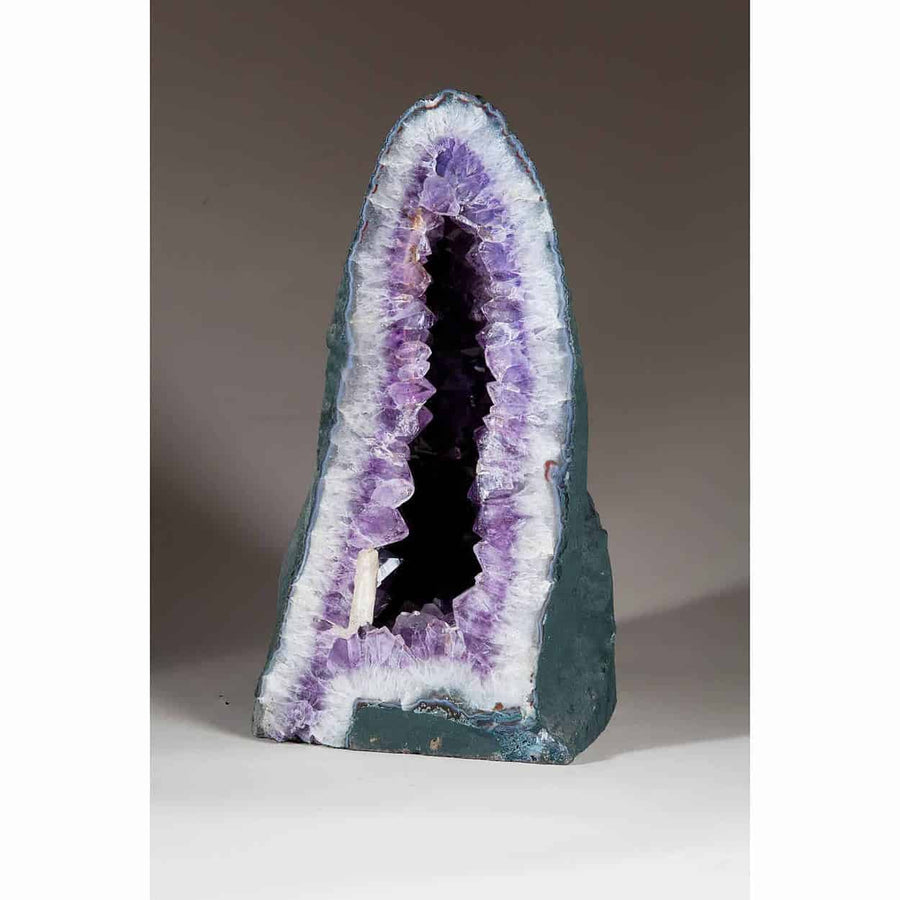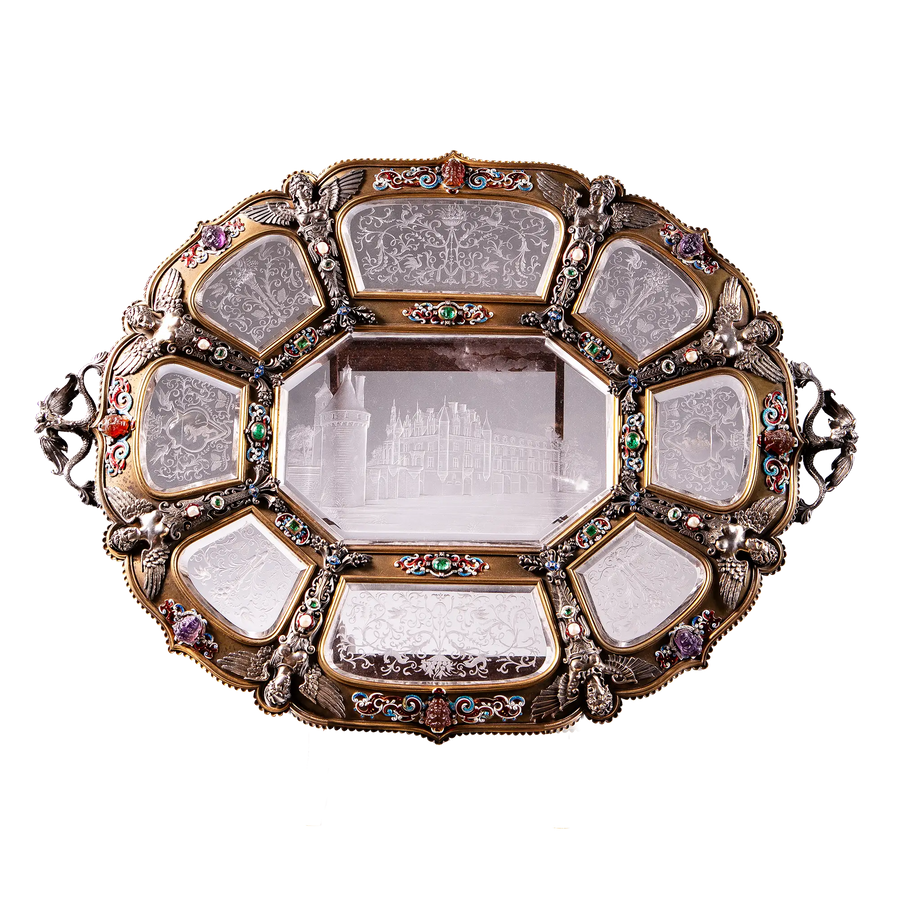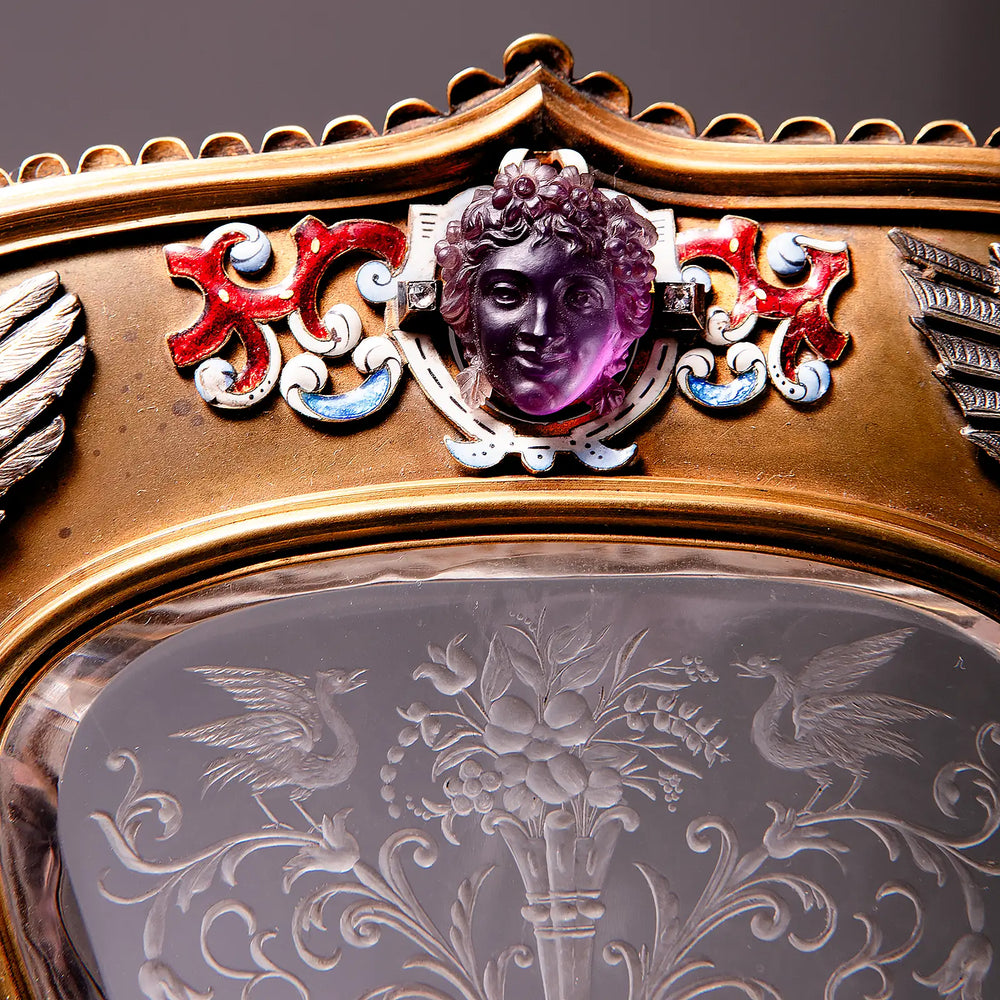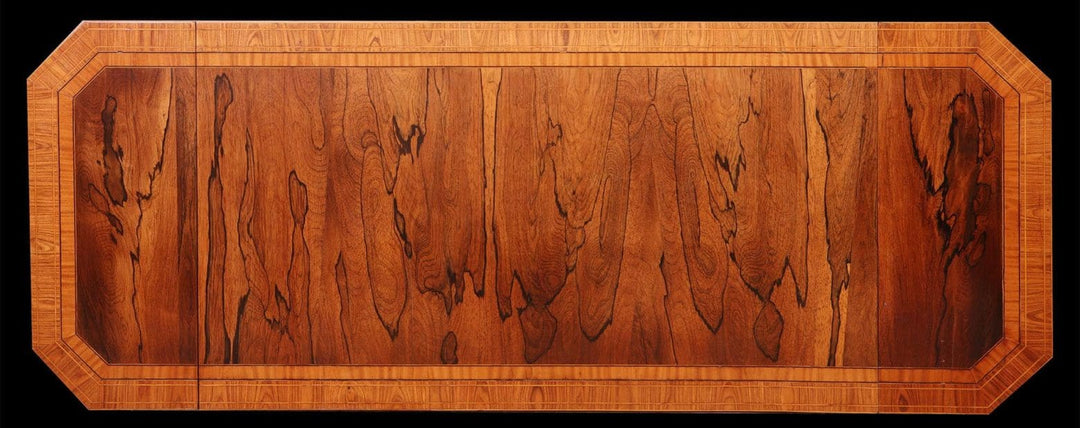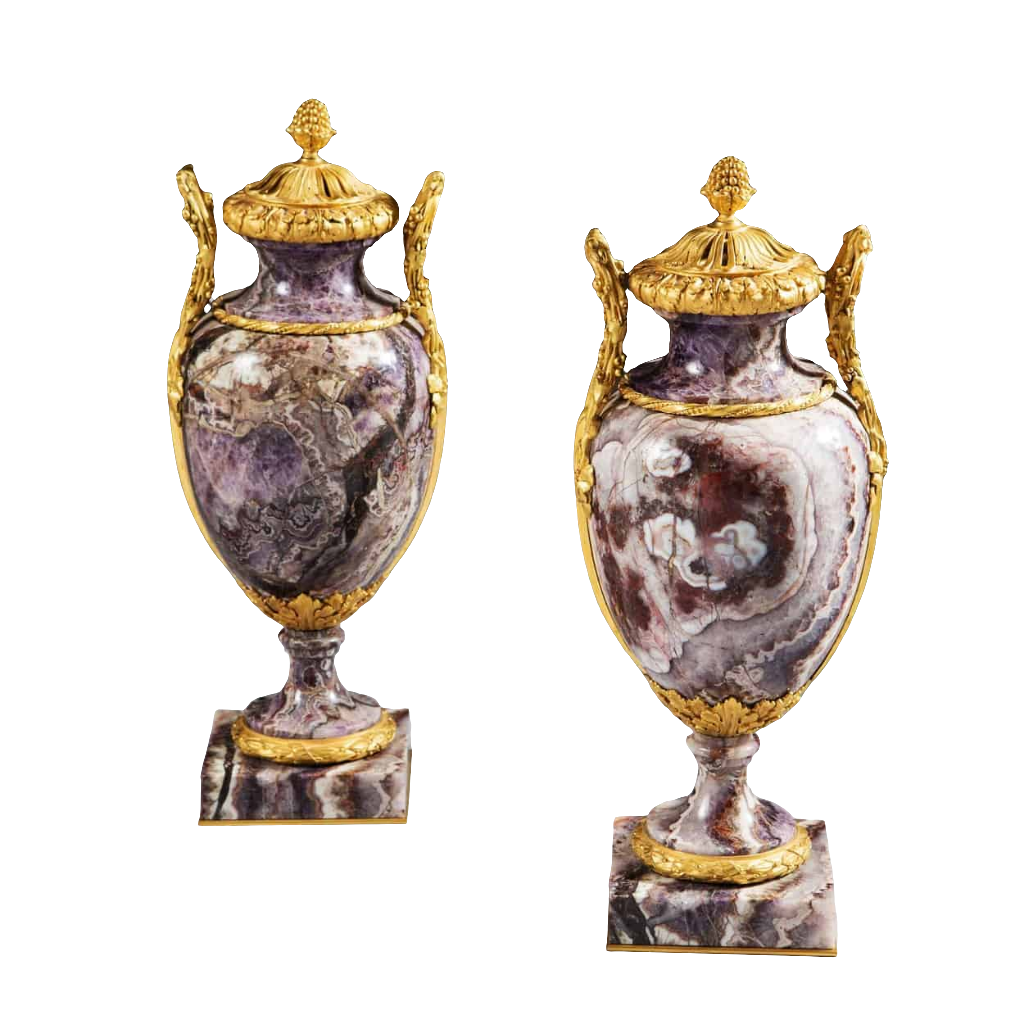
During the 17th and 18th centuries, amethyst was one of the most admired gemstones in the decorative arts, particularly across Europe. Its rich purple hue and relative abundance made it a popular choice for both ornamental and functional objects. Associated with nobility and refinement, amethyst embodied the opulence of the Baroque and Rococo periods.
Jewellery
Amethyst was a staple of jewellery design, appearing in rings, necklaces, earrings, brooches and other accessories. Often set in gold or silver, these pieces were enhanced with elaborate metalwork, echoing the bold and decorative fashions of the time.
Snuffboxes and Étuis
Amethyst was frequently used to embellish snuffboxes and étuis—small cases designed to hold tobacco snuff or personal items such as needles, scissors and grooming tools. These accessories, often carried as status symbols, gained an added air of luxury when adorned with amethyst.
Intaglios and Cameos
The gemstone was carved into intaglios and cameos, both of which enjoyed great popularity in this period. Intaglios were engraved with recessed designs for use as seals, while cameos displayed relief motifs raised against a contrasting background. Such items were valued both for their artistry and for their practical use.
Ornamental Objects
Wealthy households displayed amethyst boxes, scent bottles and decorative containers, which combined craftsmanship with gemstone appeal. These objects often became treasured collectibles, admired for their artistry as much as their material value.
Chandeliers and Lighting Fixtures
In grand European interiors, amethyst crystals were incorporated into chandeliers and lighting fixtures. Their natural translucence allowed them to refract candlelight, producing a shimmering play of light and colour that added glamour to stately settings.
Dress Accessories
Amethyst also adorned dress accessories, including buckles, buttons and hairpins, lending a fashionable accent of colour to the attire of the elite.
The Enduring Appeal of Amethyst
Amethyst’s prominence in the decorative arts of the 17th and 18th centuries was due to its availability, versatility and distinctive purple colour. In a culture where gemstones represented both wealth and taste, amethyst was prized as an elegant yet attainable choice, bridging the gap between rarity and refinement.
FAQs About Amethyst in the Decorative Arts
1. Why was amethyst so popular in the 17th and 18th centuries?
Amethyst combined beauty, status and availability. Its regal purple colour was associated with royalty and luxury, while its relative abundance made it more accessible than rarer gemstones such as rubies or emeralds.
2. How was amethyst typically used in decorative arts?
It was used in jewellery, snuffboxes, étuis, intaglios, cameos, chandeliers and small ornamental objects. Its versatility meant it could be carved, polished, or set into metalwork.
3. Is amethyst considered rare?
In the 17th and 18th centuries, amethyst was regarded as a semi-precious stone, valued for its colour rather than rarity. Today, fine-quality antique amethyst pieces remain desirable among collectors.
4. How can you identify antique amethyst jewellery or objects?
Look for signs of hand-cut stones, irregular facets and period settings in gold or silver. Wear and patina on metalwork can also indicate authenticity.
5. What is the difference between amethyst and other purple gemstones?
Amethyst is a variety of quartz, distinguished by its deep purple hue. Other purple gemstones, such as spinel or sapphire, are rarer and harder. Amethyst was favoured for its balance of beauty, durability and availability.




